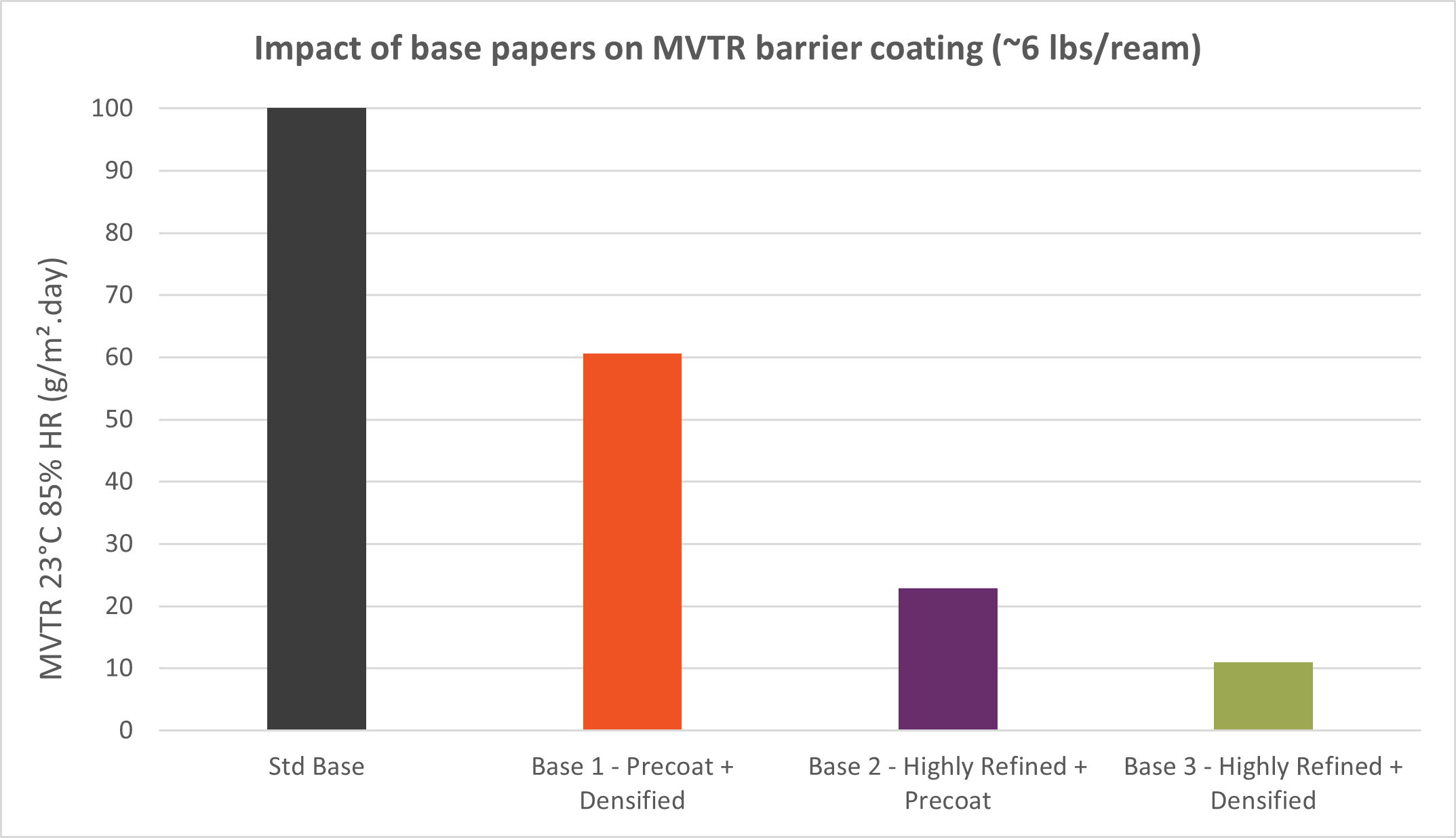Highly engineered base papers for barrier development
Small fibers can make a big difference, and a key focus area remains on utilizing fibers and other renewable materials to develop replacement solutions for current non-renewable packaging, such as plastics and films.
Ahlstrom has the unique set of capabilities and wide breadth of technical applications to allow us to develop some of the strongest performing base papers available. Highly developed base papers are key to solving the barrier requirements in flexible packaging while still utilizing the inherent end-of-life benefits that paper has to offer.
Paper – The ideal material for flexible packaging
Paper is an ideal material for flexible packaging applications, and already has a broad field-of-use from good flexibility and folding characteristics to printabilty. Paper is easily sealable and glueable, laminating well to other structures. In addition, paper functions effectively through challenging converting processes.
Ahlstrom continues to advance its base paper development to achieve the barrier properties fundamental to unlocking the sustainability benefits paper brings to flexible packaging applications. Base paper development and optimization, which dramatically improves paper performance in barrier properties, can be achieved in several categories simplified to three key elements:
- Paper Making Process – Pulp and Fiber Selection, Paper Forming, and Processing
- Mechanical Treatment – Refining and Densification
- Surface Treatment – Sizing for water barrier, pre-coatings for oxygen and water barriers, and the solubilization of cellulose itself

The Concept of Barrier Technology
The majority of flexible packaging solutions require barrier properties to function and preserve our food. The primary requirements for these applications are typically oil and grease barrier (OGR – oil & grease resistance), oxygen barrier (OTR – oxygen transmission rate), and moisture barrier (MVTR – moisture vapor transmission rate). These barrier properties are not inherently present in paper structures. Still, by engineering the production processes and additives used, paper can exhibit these properties and enable barrier coatings to work more effectively.
Oxygen Barrier
"Paper substrates can be engineered to exploit the inherent value of cellulose itself," explained Nicolas Tissier, Vice President of Group Innovation for Ahlstrom. "Cellulose by itself is a very good oxygen barrier, and highly developed base papers can deliver the oxygen barrier properties[1]." 
Ahlstrom's Genuine Vegetable Parchment (GVP) technology, one of the original forms of oxygen barrier in a fiber-based substrate, dates to the 1840s. During "parchmentization", portions of the fiber in a paper web are chemically solubilized. This solubilization process creates a film of pure cellulose, integrated throughout the fibres' web. This film of cellulose provides some of the highest barriers to grease and oil and takes advantage of the properties of pure cellulose, creating an oxygen barrier. Parchmentization is ideal for solutions that require compostability, both industrial and backyard certifications.
Oil & Grease Barrier
The processing of cellulose in papermaking can develop inherent oil and grease barriers without the use of traditionally used fluorochemicals (PFAS), and such technology-enabled Ahlstrom to develop proprietary FluoroFree® papers more than a decade ago.
This barrier to oil and grease can also provide mineral oil (MOSH/MOAH) barriers. Furthermore, base papers can be engineered to extend barrier coatings' functionality and degree of performance.

High degrees of mechanical treatment, also referred to as refining, create a highly networked structure of the fibers themselves. This high degree of refining breaks down the individual fibers into micro-portions enabling increased fiber-to-fiber bonding and creating a non-porous material which is naturally grease and oil resistant, but still recyclable.
Moisture Barrier
Although paper is traditionally hydrophilic and hygroscopic, it can be enhanced to enable the functionality of barrier coatings that provide water and moisture barriers. Ahlstrom has developed papers to provide short to midterm water resistance through surface treatments combined with base paper technology.
This water resistance can improve the packaging performance by itself. Additionally, this water resistance can extend water-based coatings for enhanced performance by either keeping the coatings on the surface where their performance is maximized, or by minimizing the amount of the coatings needed to help ensure recyclability or compostability of the final structure. This functionality means very challenging applications can be achieved, and the addition of barrier coatings to this type of structure can add multiple layers of benefits in a single structure.

"This "layering" of benefits is critical to provide a base paper with the right functional advantages to enable low levels of MVTR (high moisture barrier)," said Tissier. "By utilizing the competencies of water resistance, mechanical refining and densification, and the natural oxygen barrier of cellulose itself, a very robust base paper can be produced which enables the paper to achieve the goals of these applications and create true sustainability value," Tissier added.
Additionally, this extension of performance can be applied to other functionalities like heat-sealing which is critical to the performance of flexible packaging substrates. The highly engineered base paper can enable lower coat weights of heat-seal coatings, helping to meet end-of-life goals.
Fiber – The sustainable solution for barrier development
Ultimately, paper and fiber-based packaging possesses ideal sustainability benefits – broadly recognized as recyclable and can be designed for compostability (both backyard and industrial). Paper-based flexible packaging is produced from a renewable biobased material that promotes the healthy management of forests.
“We are well positioned to push the boundaries of what fiber-based flexible packaging can do,” continued, Nicolas Tissier. “A constant process of base paper innovation, product development and design is Ahlstrom's DNA and enables us to respond to the needs of our customers, which in turn are affected by end-user behaviour. This enables flexibility throughout the value chain and speed-to-market of sustainable packaging solutions and continues positioning Ahlstrom as the preferred specialty sustainable packaging supplier in the marketplace.”
[1] Bio-Based Packaging: Materials, Modifications, Industrial Applications and Sustainability | https://www.mdpi.com/2073-4360/12/7/1558/htm